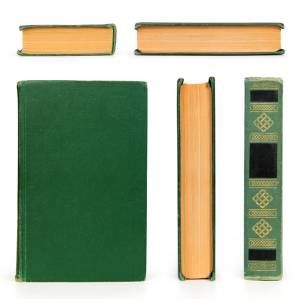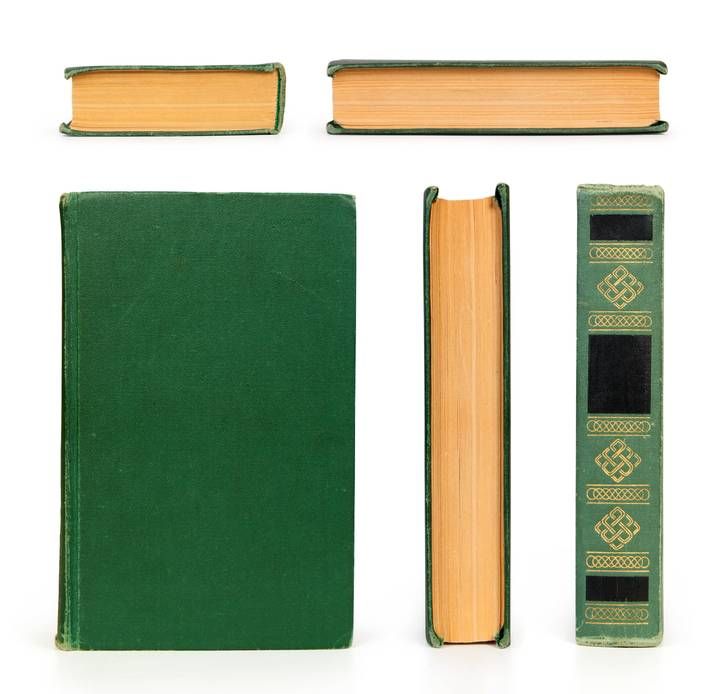
From Book Accumulator to Book Collector: A How To
This is a guest post from Charlie Lovett. Charlie is a novelist and playwright. His novel The Bookman’s Tale, set in the world of rare books, forgery, and William Shakespeare, was a New York Times Bestseller. He is a former antiquarian bookseller who has collected the works of Lewis Carroll for over 30 years, amassing one of the world’s most significant collections (including the rare 1865 first edition of Alice, Lewis Carroll’s own 1888 typewriter, and thousands of other items). His new book, First Impressions, returns to the world of rare books and antiquarian bookselling, taking Jane Austen as a subject. Follow him on Twitter at @CharlieLovett42.
____________________

If you wake up and discover your route to the kitchen impeded by books, it’s possible that it’s time to transition from being a book accumulator to a being a book collector. There are four stages in this transition: identification, organization, acquisition, and preservation.
Identification
It’s likely that the core of a good book collection is scattered around the stacks of books in your house, but you need to determine which books should be considered part of a collection and which it’s OK to loan to your old college roommate to take on his camping trip. To do this, you must first decide on a focus for your collection. Will you collect modern novels, books about railroads, Victorian poetry? The focus itself is irrelevant, but it’s very helpful to have one, and it’s natural that your focus be driven by your own passions. Once you’ve sorted out all the books that fit into your area of focus you need to know which ones are truly collectible. While it’s true that any book within your focus might deserve a place in your collection, you may want to pay special attention to those in excellent condition. For modern books this means an undamaged and unmarked book with a well-preserved dust jacket. Most modern books, if issued with a dust jacket, are not worth much without the jacket. To collectors, a missing jacket is like a missing chapter. After considering condition, look at edition. First editions are generally considered more collectible. Here is a quick online guide to identifying first editions (it’s different for every publisher, so there is no single rule; sometimes even books that say “First Edition” are not firsts). Beware of book club editions, which are produced to inferior standards. These can usually be identified by the lack of a price on the dust jacket and/or a small indentation on the lower right corner of the back cover.
Organization
So, you’ve discovered that you have several shelves of first editions in excellent condition of books in your focus area. The next step is to get things organized. Your focus area is likely to suggest its own organizational method. You might arrange books by author or date or subject matter. You might want to put the most valuable books (or the most beautiful or just your favorite) in a place of pride. By shelving all the books that are part of your collection (rather than just part of your accumulation) together, you will gain a better sense of where the holes are in your collection and this can lead to the next step.
Acquisition
Now that you have identified yourself as a book collector with a focus and a core collection, it’s time for some retail therapy. Your rate of acquisition will depend on a variety of factors from budget to space to the availability of books in your focus area. You want to consider the same factors in acquiring a book that you did in identifying the collectible books already in your home. Value condition—it’s the single most important factor in the price of most books. Seek out that first edition. Sometimes books are reprinted quickly and a new bookstore will have recently arrived second printings sitting on the top of a stack that also includes first editions. It’s worth looking. Above all, learn as much as you can about the books in your focus area—which are important, which most belong in your collection, and what reasonable prices are. You can do this by communicating with dealers, reading bibliographies, talking to other collectors, and browsing online stock, whether on individual booksellers’ sites or at a mega-site like abe.com.
Preservation
Finally: take good care of your books. Browse through a website for an archival supply company and consider what you might need to help preserve your collection—a roll of acid-free glassine wrap to protect dust jackets, an archival quality box to store pamphlets and broadsheets, an archival album for postcards or playbills. It’s worth investing in some quality storage to protect your investment. Keep your books out of direct sunlight to avoid fading the spines or covers. Take any loose items such as bookmarks or newspaper clippings out of your books. If they are related to the book, preserve then in an acid free envelope. Finally, unless you are very famous, do not write in your collectible books. Sure, we’d all love to have William Shakespeare’s annotated copy of Pandosto, but your marked up copy of a nice first edition just went from a collectible to a nearly useless used book.
So there you are—in four easy steps you’ve gone from being someone who clutters up the house with books to being a genuine bibliophile. By tomorrow your spouse will be saying, “You want to spend $200 on what?!” But you’re on your own with that one.











